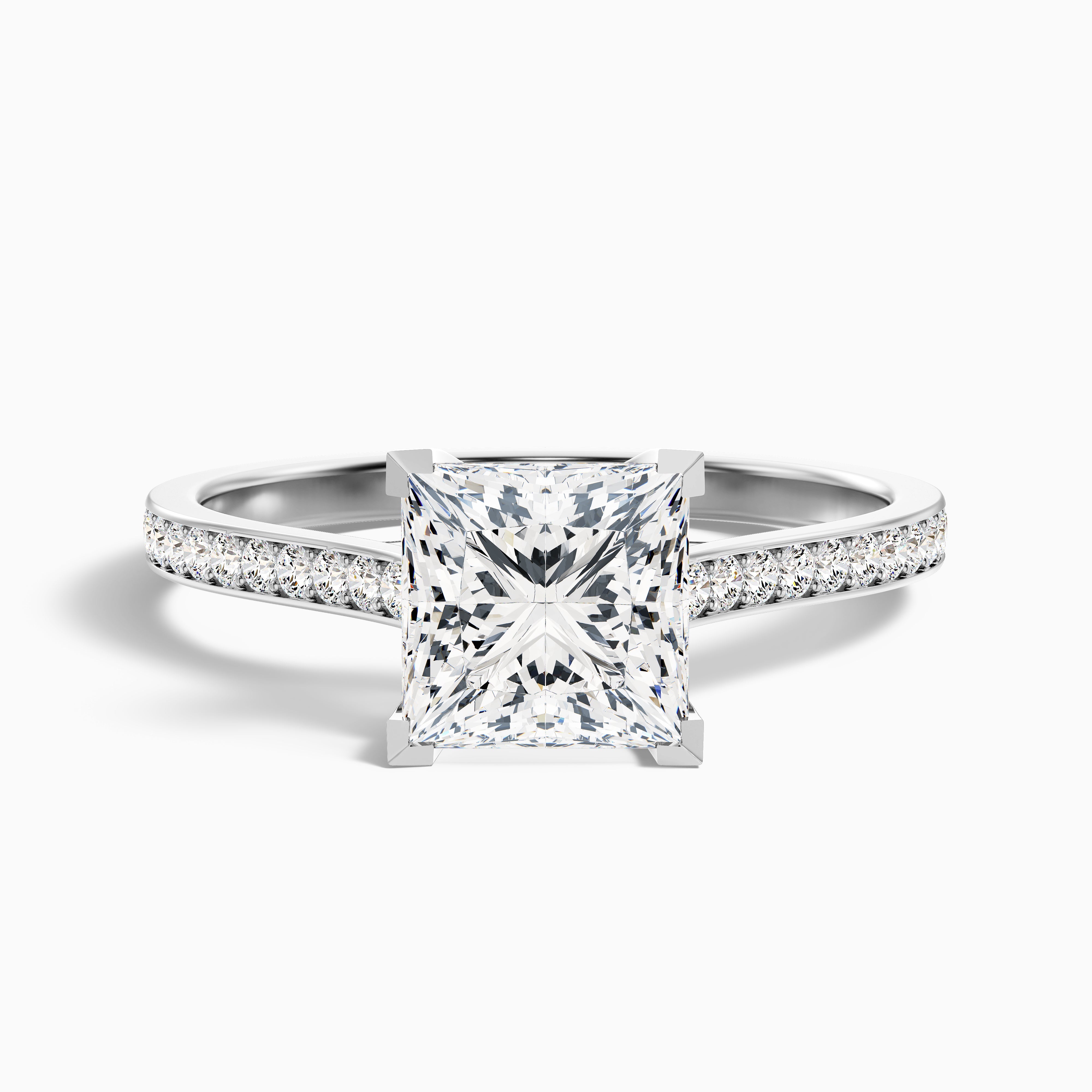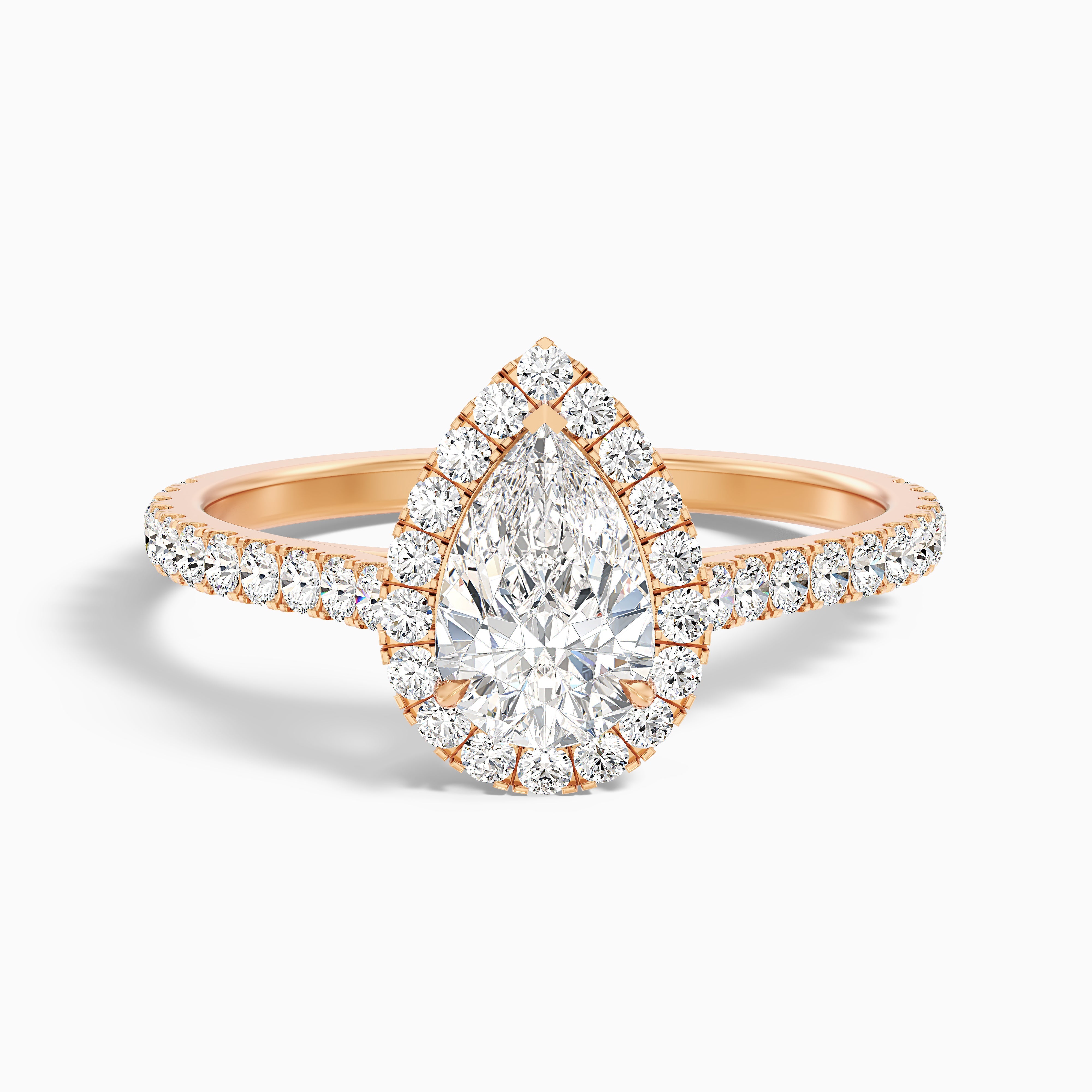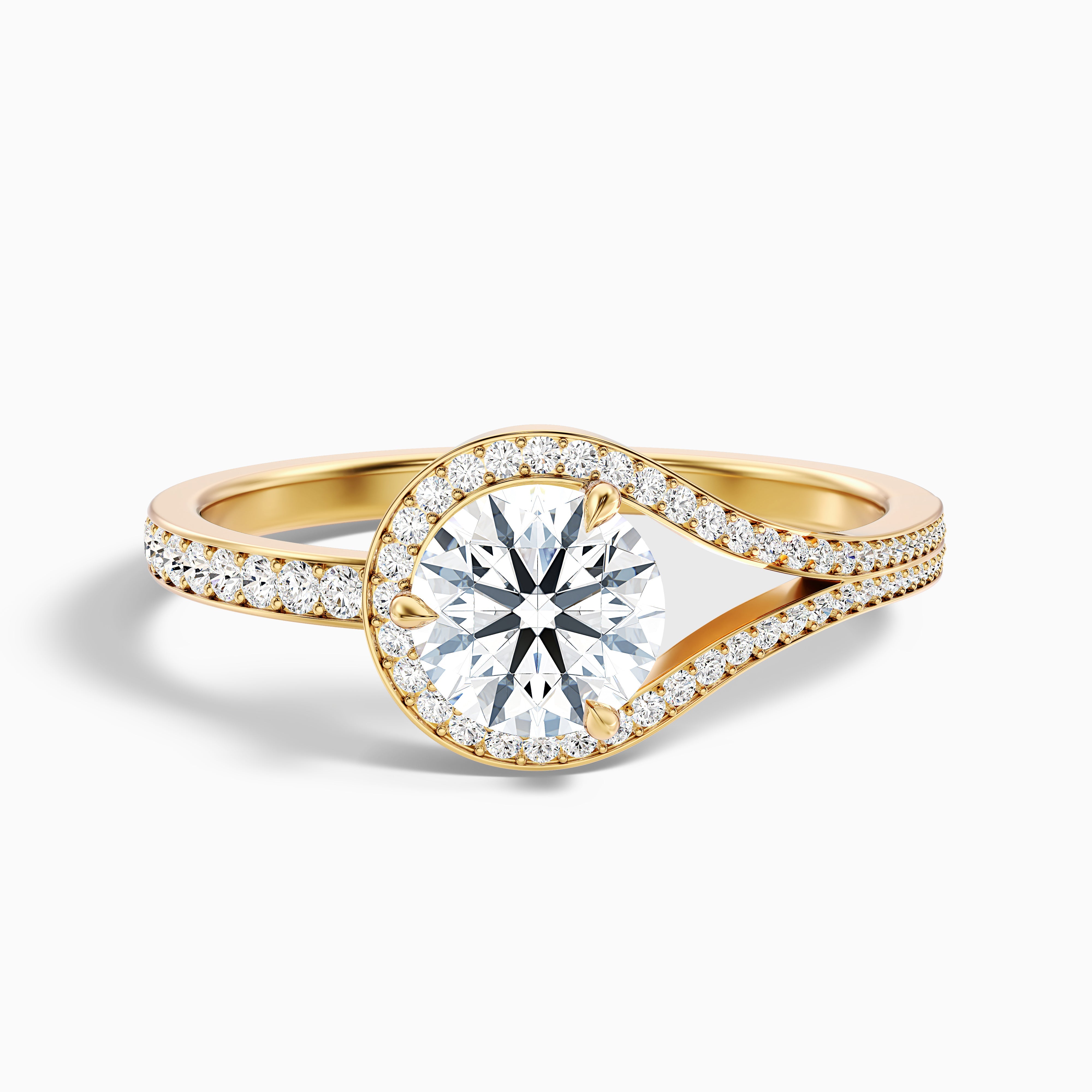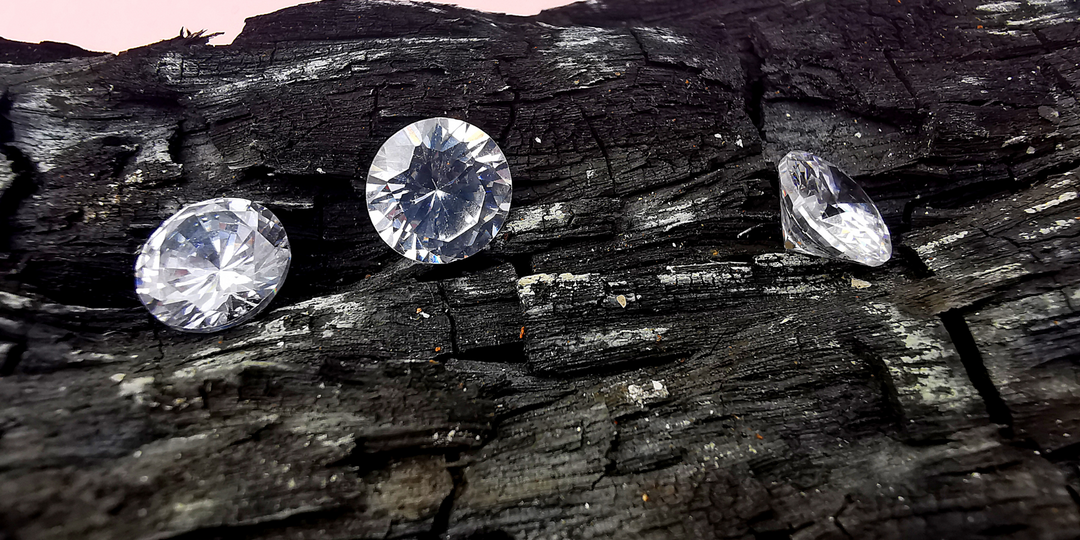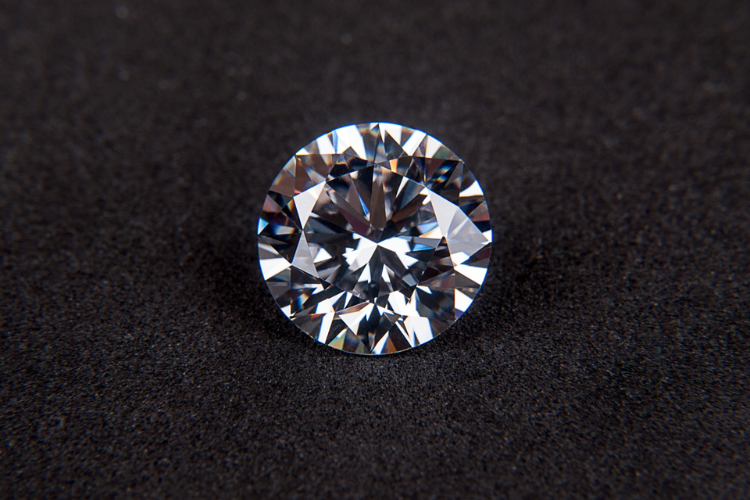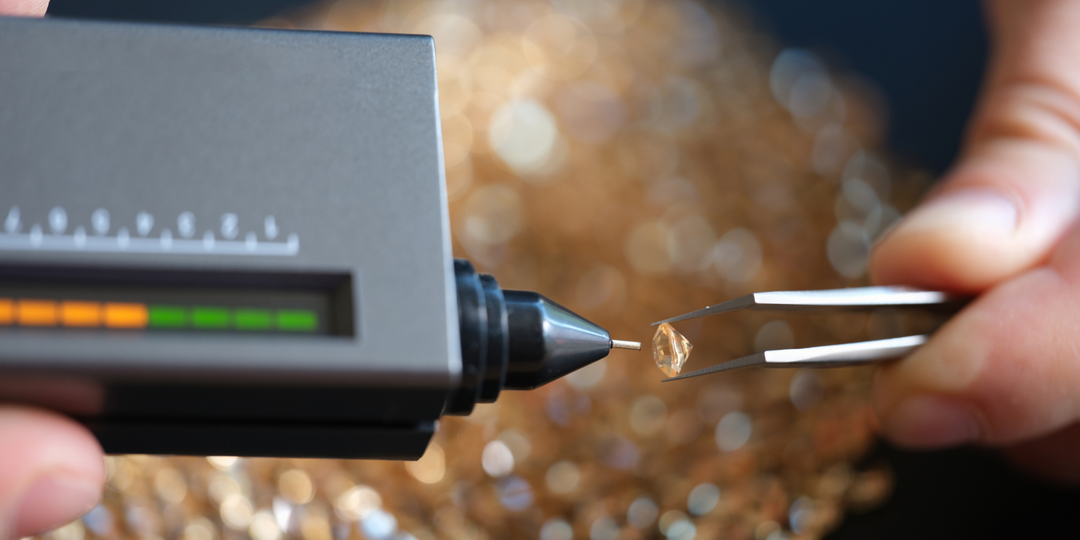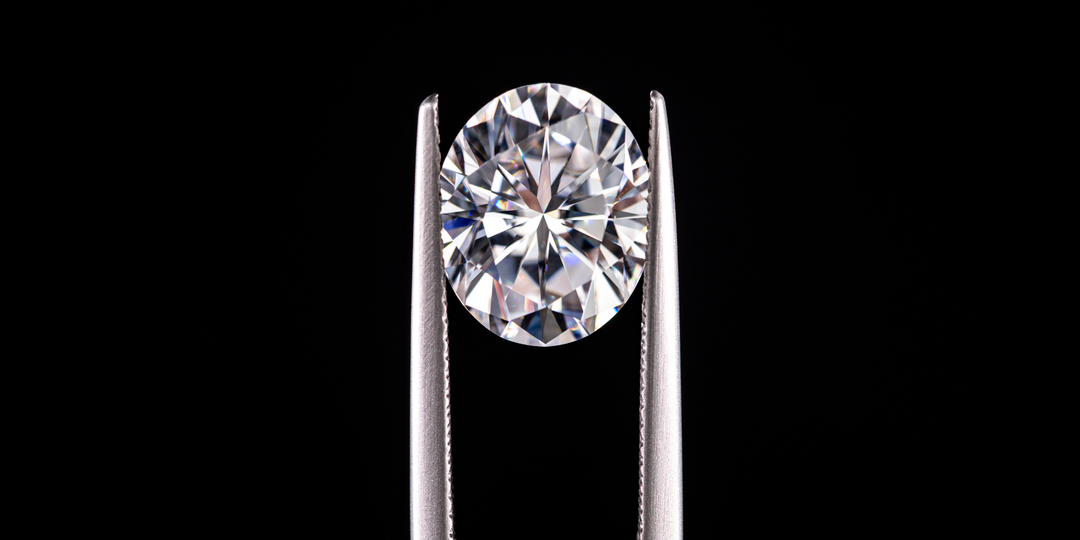How Are Lab Grown Diamonds Graded and Certified by GIA?
If you're into glitz and glamor, you've probably heard about laboratory-grown diamonds. They shine just as brightly as natural diamonds, but how do they get graded and certified? Today, we're unwrapping the mysteries behind how the Gemological Institute of America (GIA)handles these man-made marvels. Whether you're a jewelry enthusiast, an eco-friendly shopper, or someone on the hunt for the perfect diamond, this guide has got you covered.
Can a Lab Grown Diamond Be Certified?
Yes! Just like natural diamonds, lab grown diamonds can be certified too. This is crucial for us buyers as it tells us exactly what we’re getting – think of it as a report card for diamonds. A diamond grading report provides a full quality assessment on the same scales as natural diamonds, with laser inscriptions for identification and specific criteria for submitting diamonds.
We trust the GIA, one of the most well-known in the industry, for grading and certifying diamonds. They grade lab grown diamonds to the same standards as natural diamonds. This consistency means we know exactly what we’re buying, whether it’s a lab grown or natural diamond. It’s reassuring to know the quality and authenticity of our purchase is backed by a well-known organization.
When it comes to diamond certification, you've got two major players: the Gemological Institute of America (GIA) and the International Gemological Institute (IGI). GIA is famous for its strict grading standards and is often seen as the gold standard for natural diamonds.
On the other hand, IGI is known for its expertise in both natural and lab grown diamonds, which is pretty cool. Here at CaratBee, we're super excited to offer IGI-certified diamondsbecause it means each stone is top-quality. Whether you choose a GIA or IGI-certified diamond, you can relax knowing you're getting something authentic and high-quality.
Role of GIA in Diamond Grading

The Gemological Institute of America (GIA) plays a vital role in the grading of diamonds. Founded in 1931, this nonprofit organization is dedicated to research and education in gemology, with the primary goal of fostering public trust in gems and jewelry through the highest standards of integrity, academics, science, and professionalism.
Key Roles of the GIA:
- Diamond Grading: The GIA employs a meticulous grading process for both natural and lab grown diamonds, ensuring consistency and accuracy.
- 4Cs Assessment: Diamonds are evaluated based on cut, color, clarity, and carat weight, known as the 4Cs, which are essential in determining a diamond’s quality and value.
- Advanced Technology: The GIA utilizes cutting-edge technology to differentiate between natural and lab grown diamonds, as labgrown diamonds can have identical physical, chemical, and optical properties as their natural counterparts.
- Public Trust: By upholding the highest standards in grading, the GIA ensures that consumers can trust the quality and authenticity of their diamonds.
Through these efforts, the GIA plays a crucial role in the diamond industry, promoting transparency and confidence in the market. Changes in GIA's grading policies for lab grown diamonds are expected to impact the diamond market by enhancing consumer confidence and expanding the overall market, attracting new customers.
The 4Cs of Diamond Grading
The 4Cs—Carat, Cut, Color, and Clarity—are the universal method for assessing the quality of any diamond, whether natural or lab grown. Understanding these factors is crucial for anyone interested in purchasing a diamond. The 4Cs are equally important for evaluating a lab-created diamond.
Carat
Carat weight measures a diamond’s size. One carat equals 200 milligrams. The larger the carat weight, the more valuable the diamond generally is. However, carat weight alone doesn’t determine a diamond's quality.
Cut
A diamond’s cut affects how well it reflects light. The better the cut, the more sparkle you’ll see. There are five grades in diamond cuts: Excellent, Very Good, Good, Fair, and Poor. An Excellent cut is the highest grade, indicating exceptional sparkle and fire. A Good cut is a median grade, categorized as decent with acceptable brilliance and fire. A Poor cut grade means significant compromises in brilliance and fire, resulting in a low-quality diamond with less demand in the market.
Color
>Diamond color is graded on a scale from D (colorless) to Z (light yellow or brown). The less color a diamond has, the higher its value.
- D-F color range is considered colorless and represents the finest quality diamonds available on the market.
- G-H color range is near colorless and is often indistinguishable from the D-F color grade to the naked eye.
- In the I-J color range, a faint yellow or brown may be visible under certain lighting.
- The K-M color range shows very light yellow or brown, which is more noticeable under lighting.
- The last grade, N-Z, ranges from light to fancy yellow or brown with varying degrees of color intensity.
For more sparkle and high-quality diamonds, you should opt for the D-F color grade, which is the best available on the market
Clarity
Clarity refers to the presence of internal or external flaws known as inclusions and blemishes. The GIA clarity scale ranges from Flawless (no inclusions or blemishes visible under 10x magnification) to Included (inclusions and/or blemishes visible to the naked eye).
- An FL clarity grade diamond is considered to be the highest quality diamond with more value.
- VVS1-VVS2 clarity grades have extremely minor inclusions that are difficult to see even under 10x magnification.
- Stones with SI1 - SI2 clarity grades have visible inclusions that can be seen with the naked eye without any special tools, which lowers their value and can affect the diamond’s appearance.
How the 4Cs Are Applied to Lab Grown Diamonds
The 4Cs are applied to lab grown diamonds in the same way they are to natural diamonds. Each lab grown diamond undergoes a thorough evaluation by GIA gemologists to determine its carat weight, cut, color, and clarity. This ensures that lab grown diamonds meet the same high standards as their natural counterparts. One of the methods used to create lab grown diamonds is chemical vapor deposition, which involves lower pressures and temperatures compared to other methods.
Comparison Between Grading of Natural and Lab Grown Diamonds
| Aspect | Natural Diamonds | Lab Grown Diamonds |
|---|---|---|
| 4Cs Application | Graded using the 4Cs (cut, color, clarity, carat weight), allowing consumers to make informed choices. | Graded using the same 4Cs criteria, providing a basis for informed consumer choices. |
| Grading Process Differences | Exhibits natural growth patterns and inclusions. | Often shows unique growth patterns and inclusions visible under magnification. |
| Identification | Gemologists identify based on natural growth patterns. | Identification is possible using growth patterns and inclusions as indicators. |
| GIA Reports | Reports indicate natural origin. | GIA reports provide specific information to indicate lab grown origin, ensuring transparency for buyers. |
The Certification Process for Lab Grown Diamonds
Certification Process for Lab Grown Diamonds:
- Submission: Diamond is submitted to GIA for grading.
- Initial Examination: Confirm diamond is lab grown.
- Detailed Grading: Assess carat weight, cut, color, and clarity.
- Laser Inscription: Inscribe unique GIA report number.
- Report Generation: Generate detailed reports with grading info and lab grown confirmation.
It is crucial to ensure that lab-created diamonds come with reliable certifications, such as those from IGI and GIA, to verify their quality and authenticity.
Differences in the Certification Process for Lab Grown vs. Natural Diamonds
The main difference lies in the identification step. For lab grown diamonds, the GIA uses specialized equipment to detect growth patterns and inclusions unique to lab grown stones. This step is crucial for distinguishing lab grown diamonds from natural ones. Unlike cubic zirconia, which is a common diamond simulant, lab grown diamonds are chemically identical to natural diamonds and require specialized equipment for identification.
Related Read: Cubic Zirconia vs Lab Grown Diamond: Key Differences
What Information Is Included in a GIA Lab Grown Diamond Report?
A GIA lab grown diamond report includes:
- The diamond’s carat weight, cut, color, and clarity.
- A plot of the diamond’s inclusions and blemishes.
- A statement confirming the diamond is lab grown.
- The unique GIA report number inscribed on the diamond.
- A note that lab grown diamonds are recognized as real diamonds due to their identical chemical structure to natural diamonds.
Why GIA Certification Matters for Lab Grown Diamonds
When you’re buying a lab grown diamond, GIA certification is key. It gives you peace of mind, knowing that your diamond meets the same high standards as natural ones. You want to make sure you’re getting quality, right? This certification isn’t just a stamp of approval; it boosts transparency in the market. With GIA certification, you have access to accurate and reliable information about your diamond, making it easier to make informed choices.
Plus, it helps you feel confident in your purchase, whether it’s for an engagement ring or a special gift. In a world where choices can be overwhelming, knowing your diamond has been evaluated by a trusted authority makes all the difference. So next time you’re shopping for lab grown diamonds, keep an eye out for that GIA seal—it’s your ticket to a beautiful and trustworthy purchase! The growing acceptance and credibility of lab diamonds, particularly with GIA certification, highlight their importance in today's market.
How can you ensure the certification is valid by GIA?
To verify the authenticity of a GIA-certified diamond, you can use the following methods:
GIA's Online Verification Service: Visit GIA's website and enter the diamond's certificate number. The service will provide detailed information about the diamond, including its specifications and authenticity.
Check the Certificate's Physical Features: GIA certificates have specific security features, such as watermarks, holograms, and microprinting, that can be difficult to replicate. Examine the certificate carefully for these features.
Contact GIA Directly: If you have any doubts about a certificate's validity, you can contact GIA's customer service directly. They can provide you with additional information and assistance.
At CaratBee, we’re all about quality and transparency when it comes to picking our diamonds. We only go for IGI-certified diamonds, which are just as reputable as GIA, to make sure every stone meets top-notch grading and authenticity standards. Our policies make sure you get diamonds that are properly evaluated for cut, color, clarity, and carat weight. So, you can enjoy peace of mind and fantastic value. You can also verify your IGI-certified diamonds too.
Conclusion
Lab grown diamonds are an amazing alternative to natural ones! They shine just as beautifully and come with some great perks for the environment. Plus, knowing how the GIA grades and certifies these diamonds helps you make a smart choice. Excited to dive into the world of lab grown diamonds? Take a look at our collection and find your perfect sparkle today!




